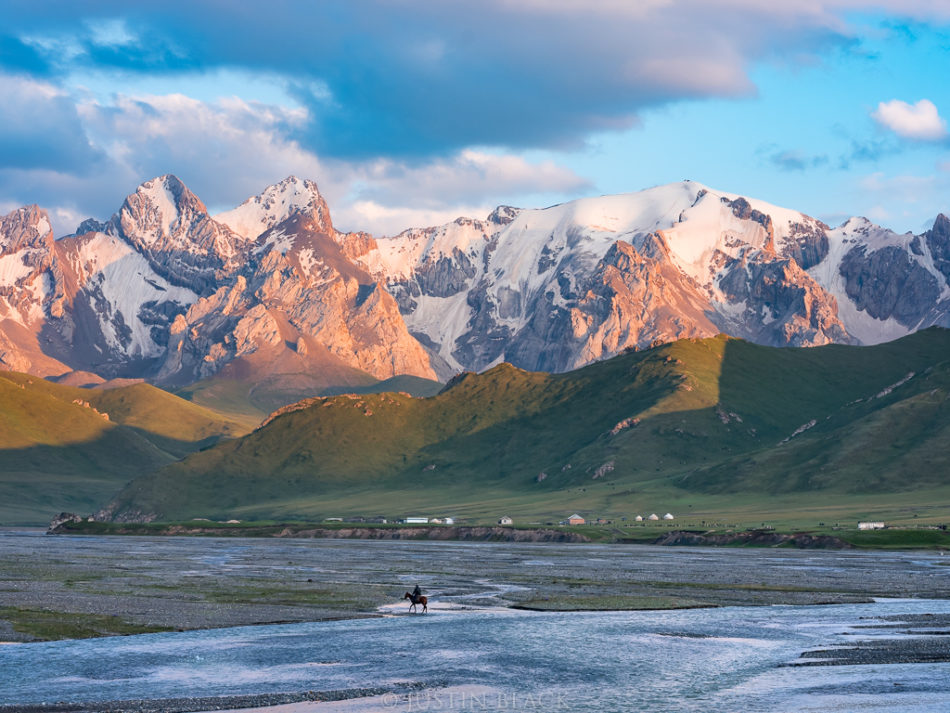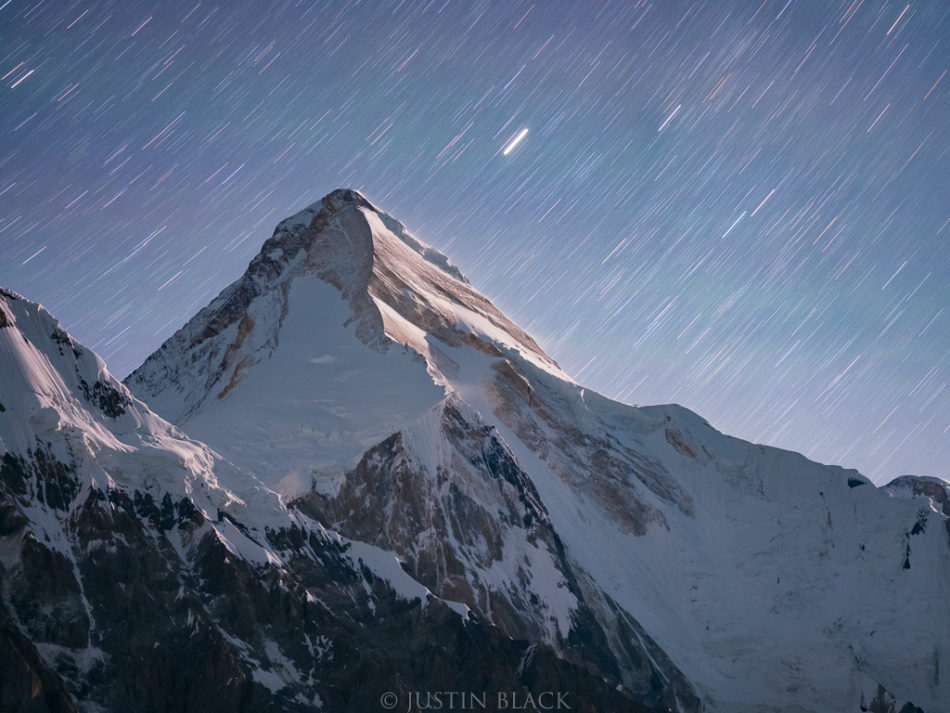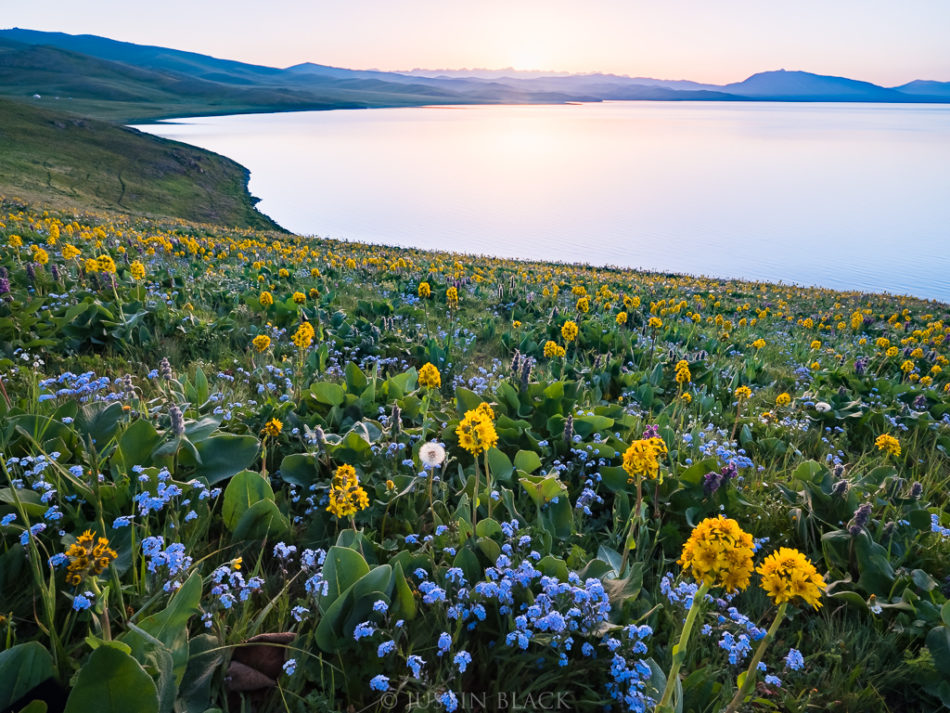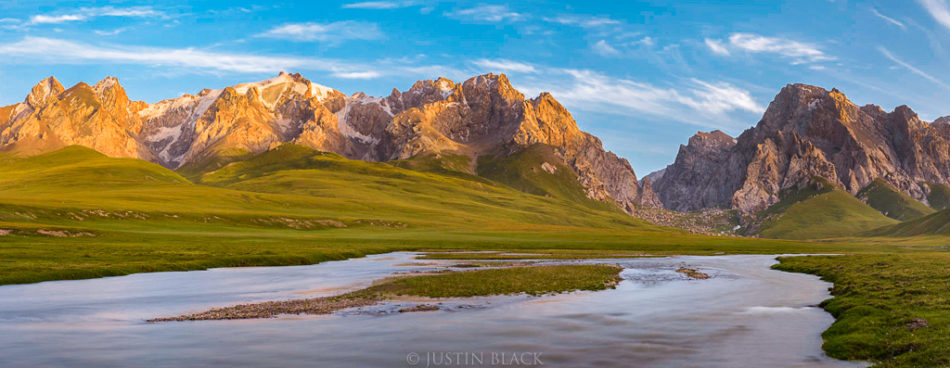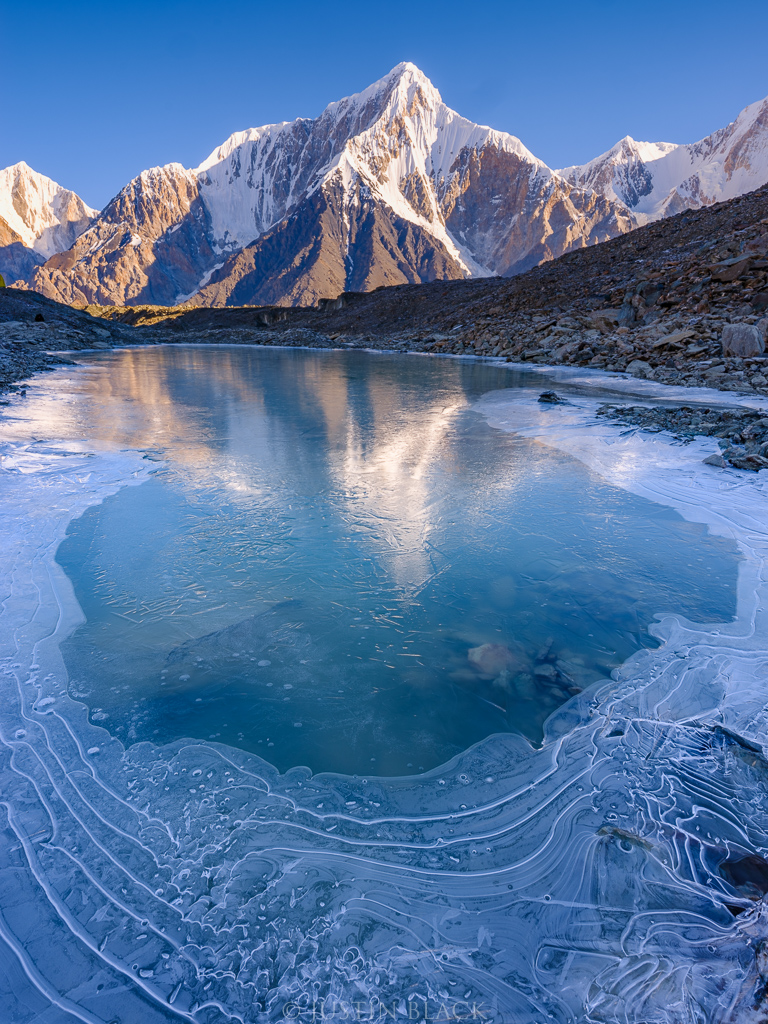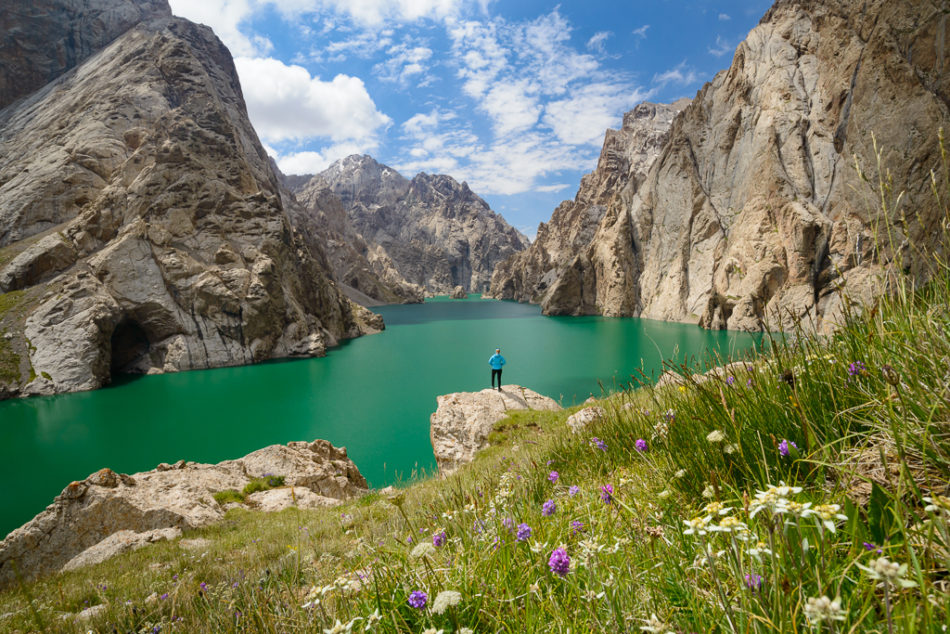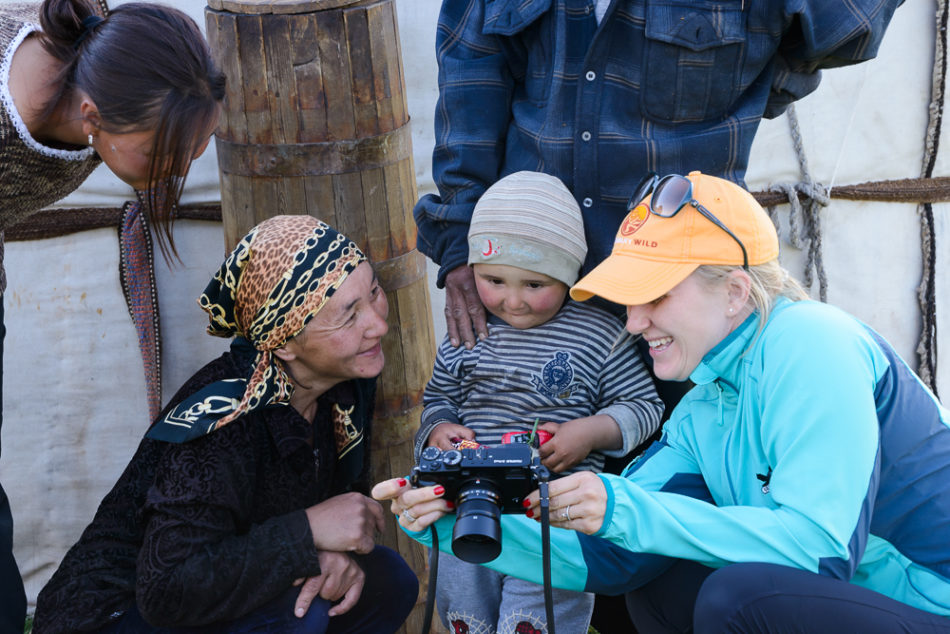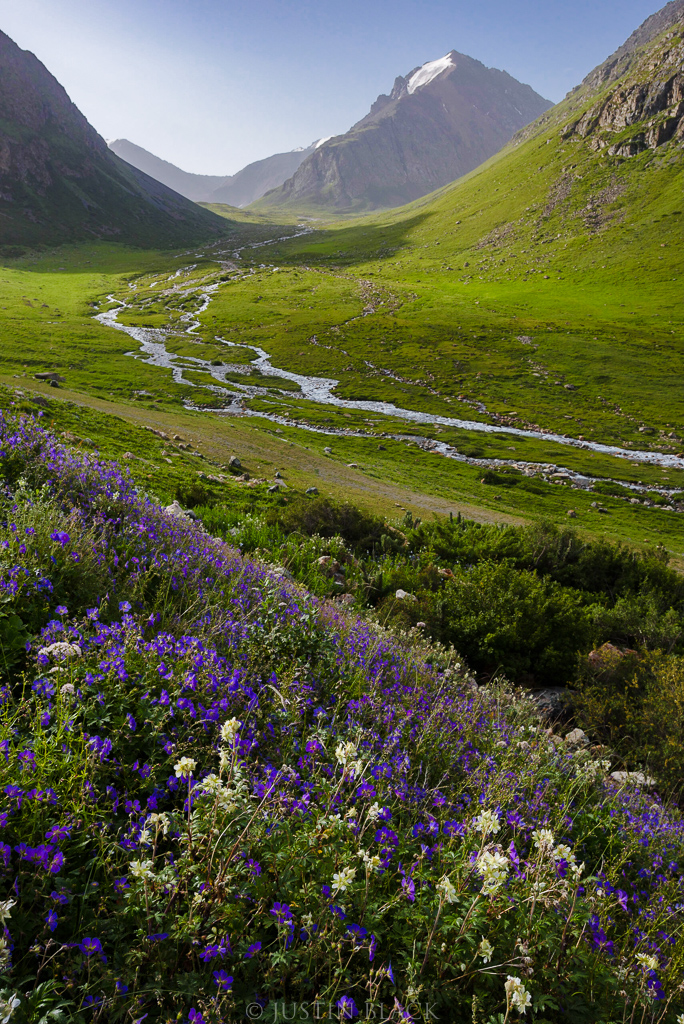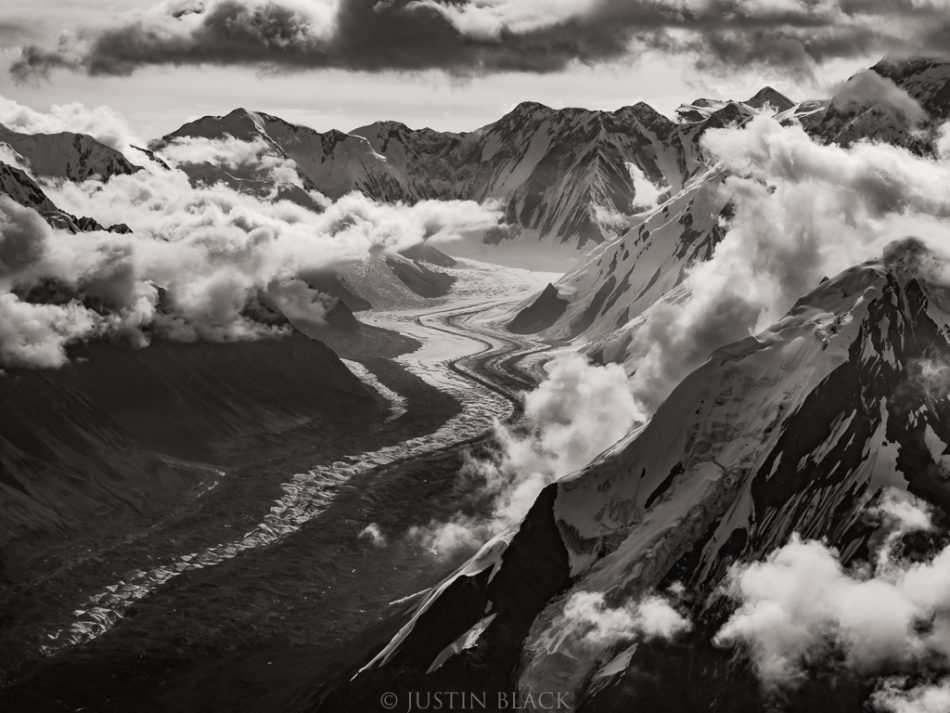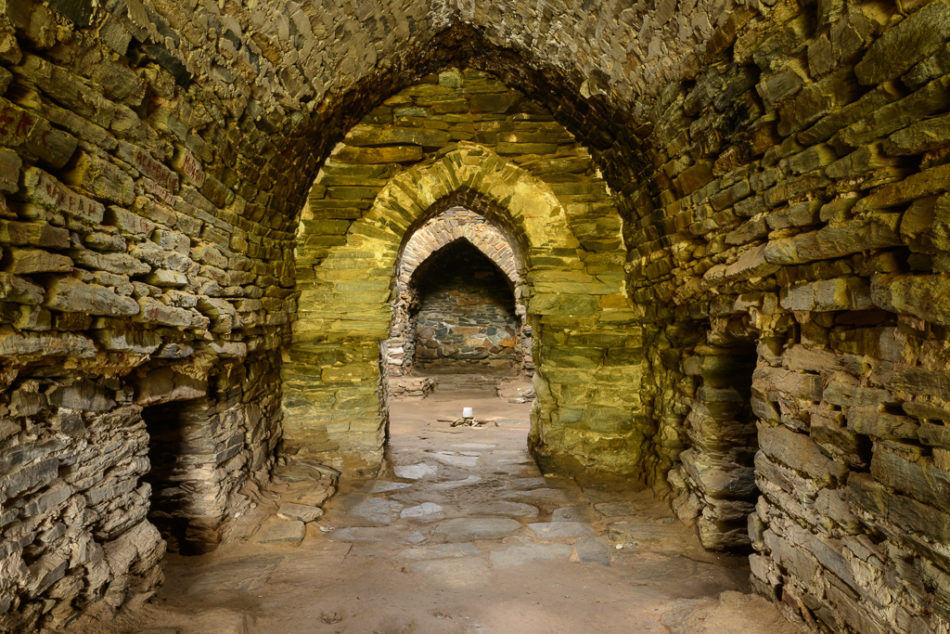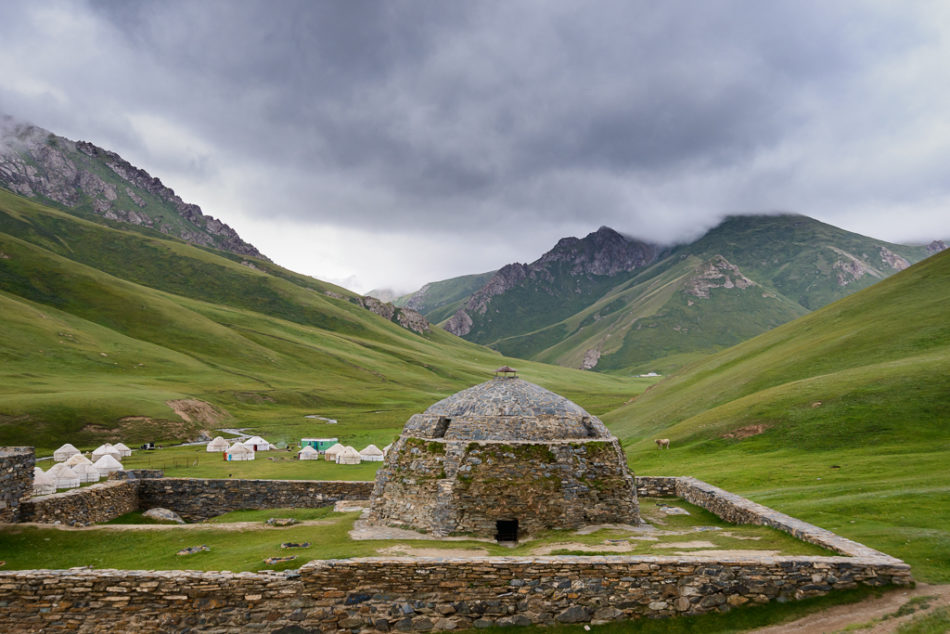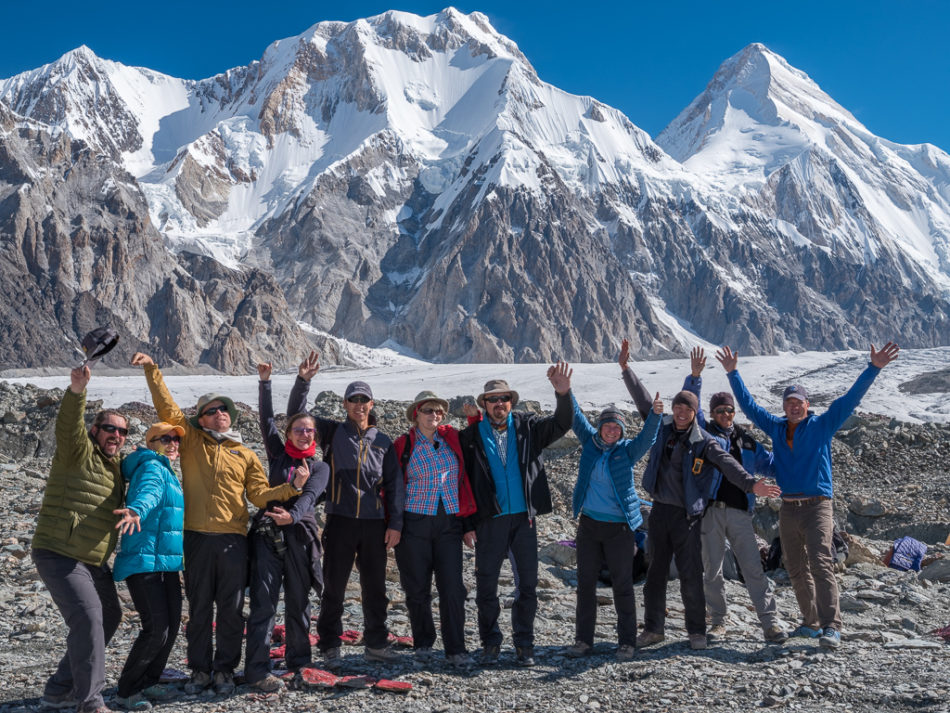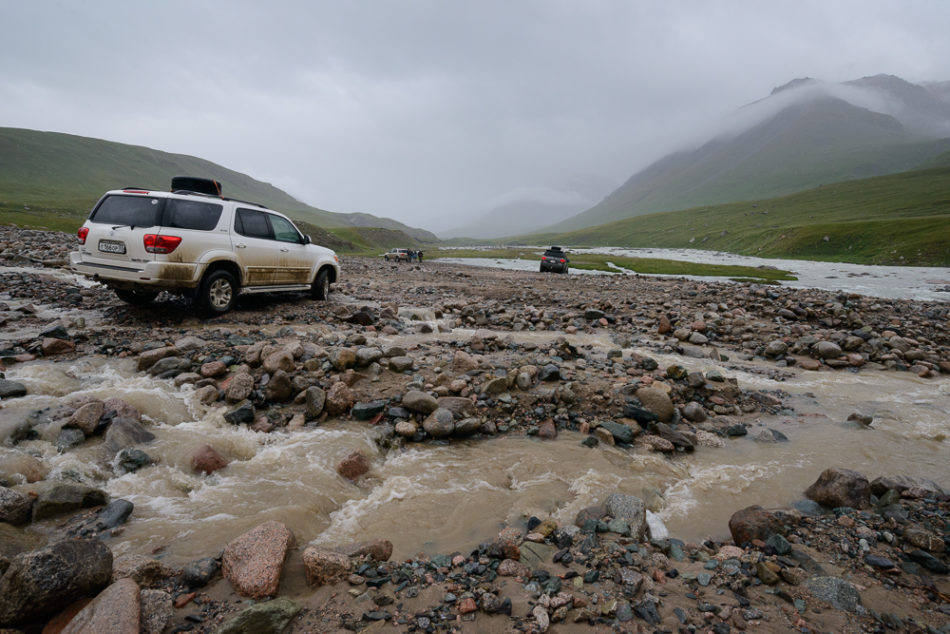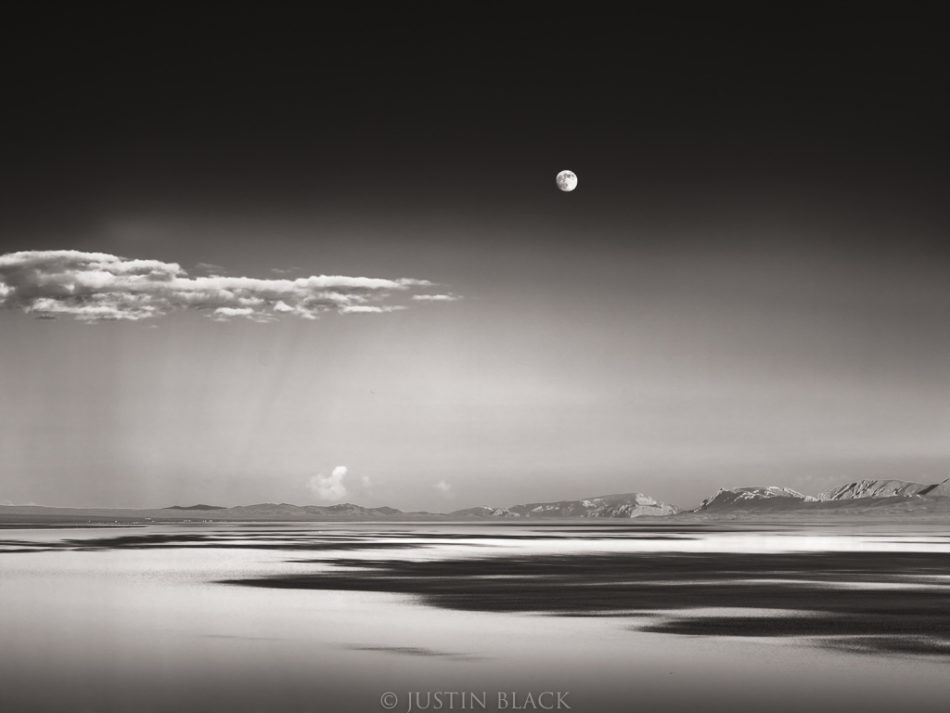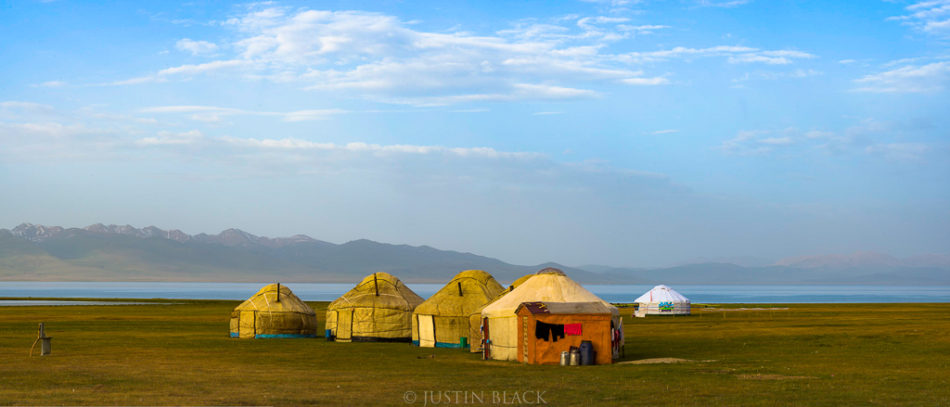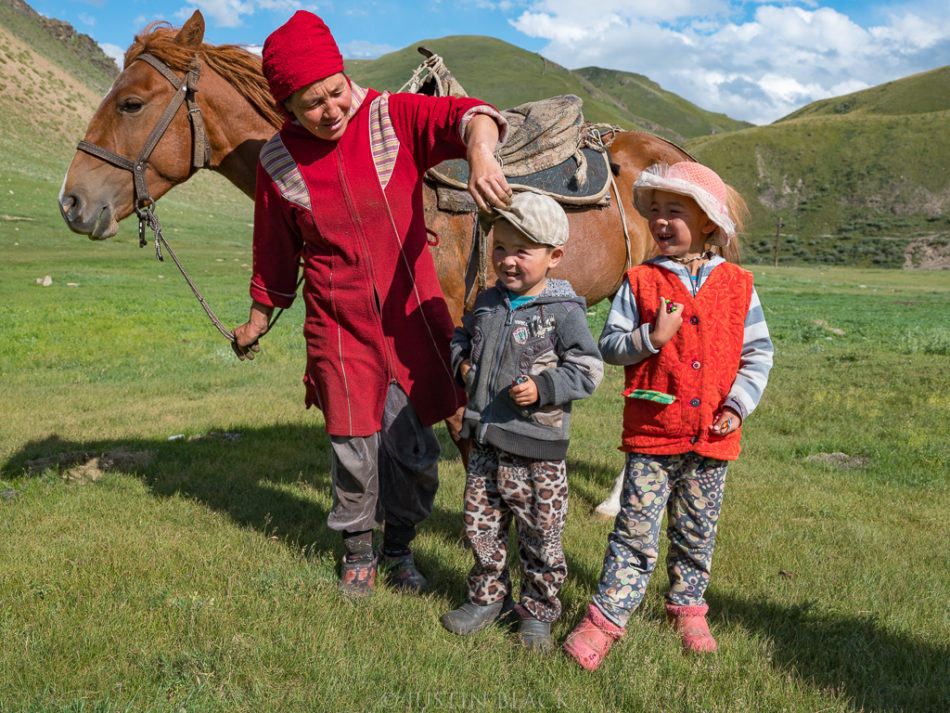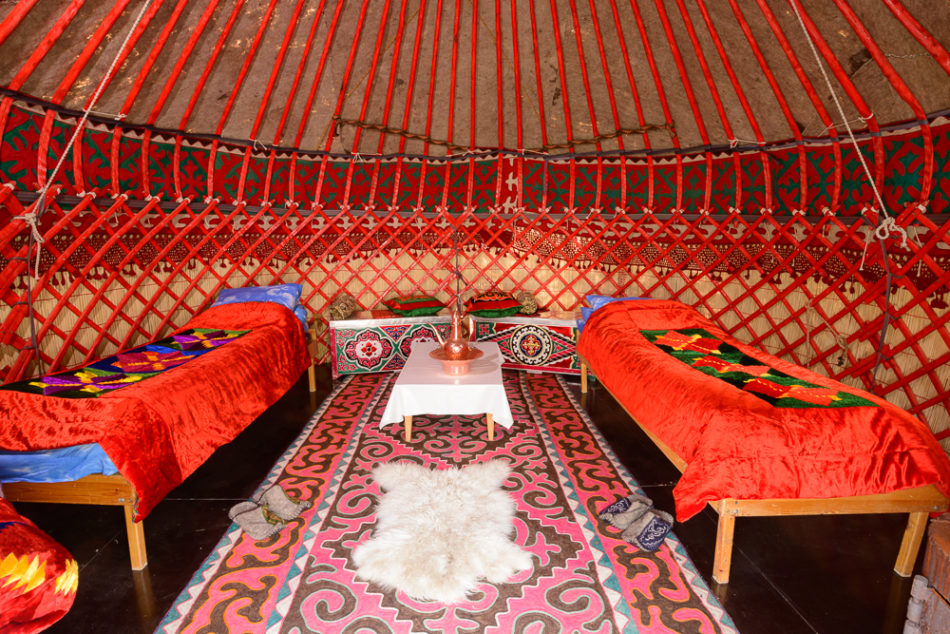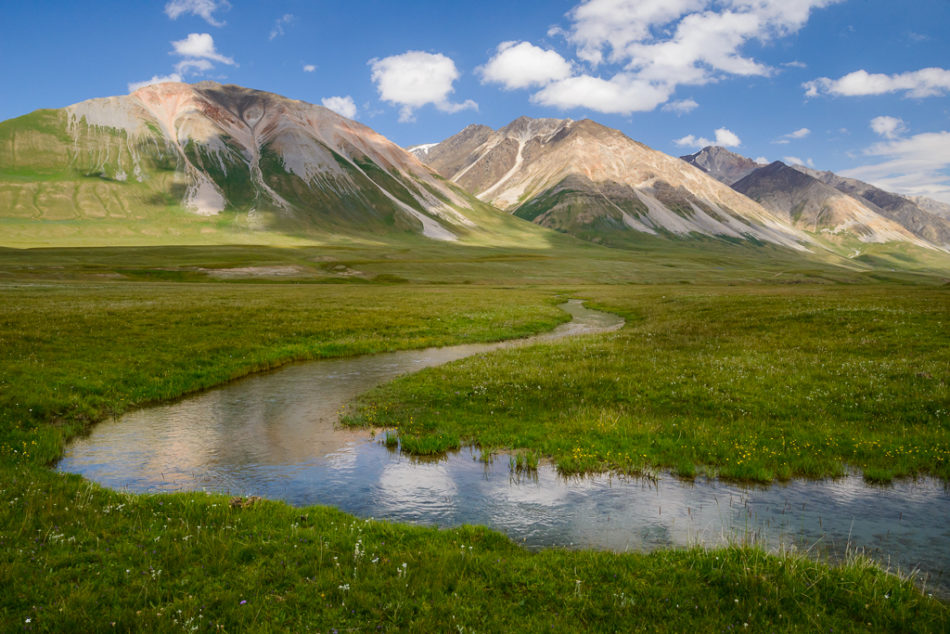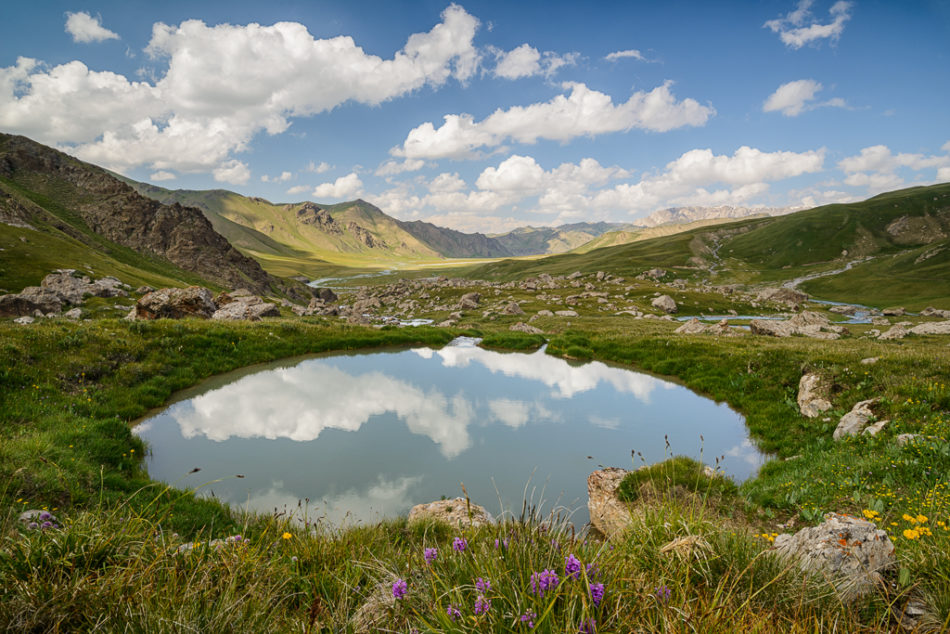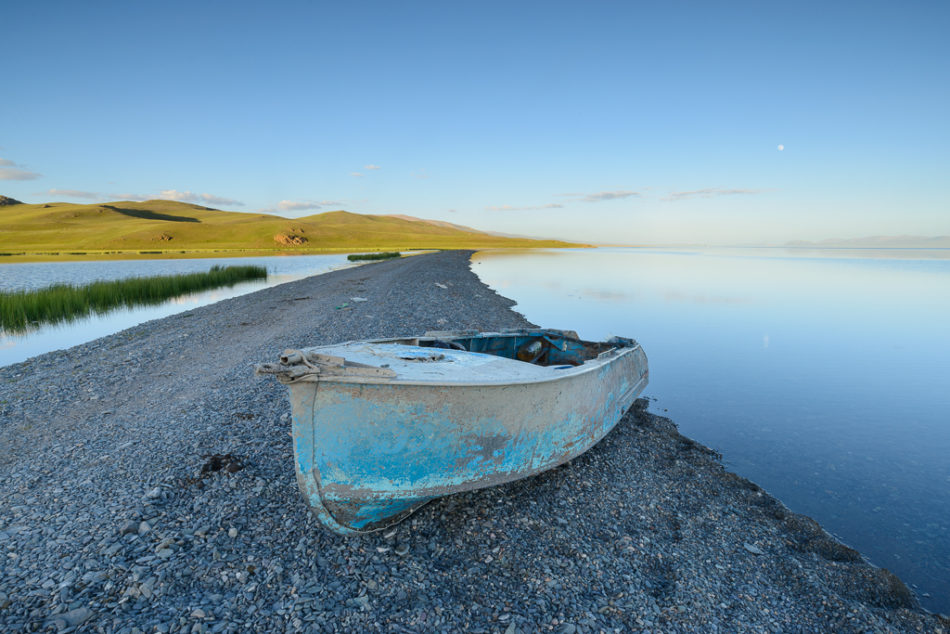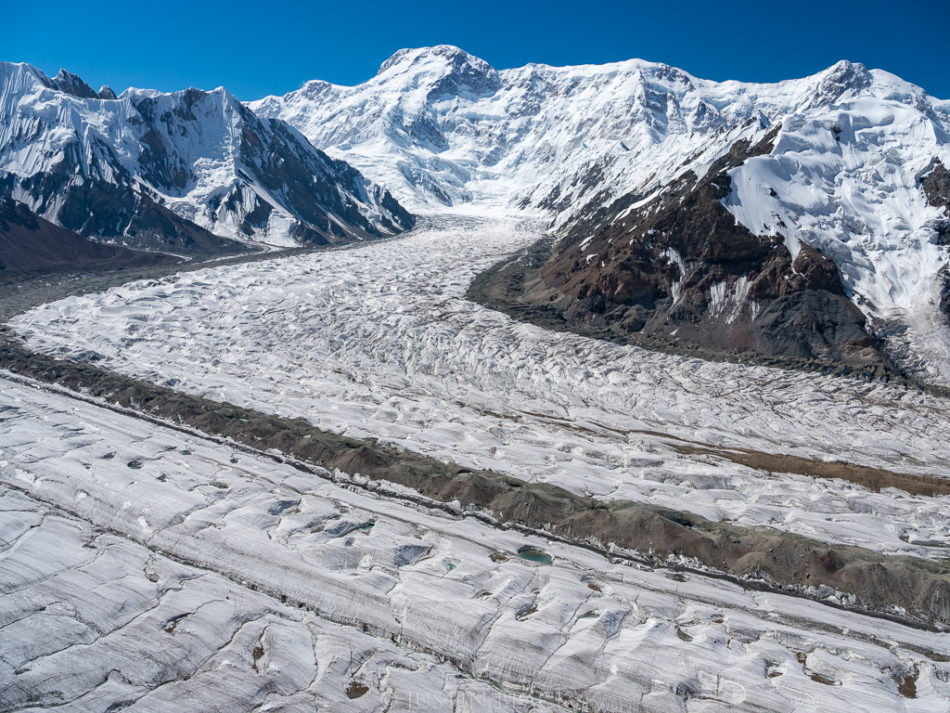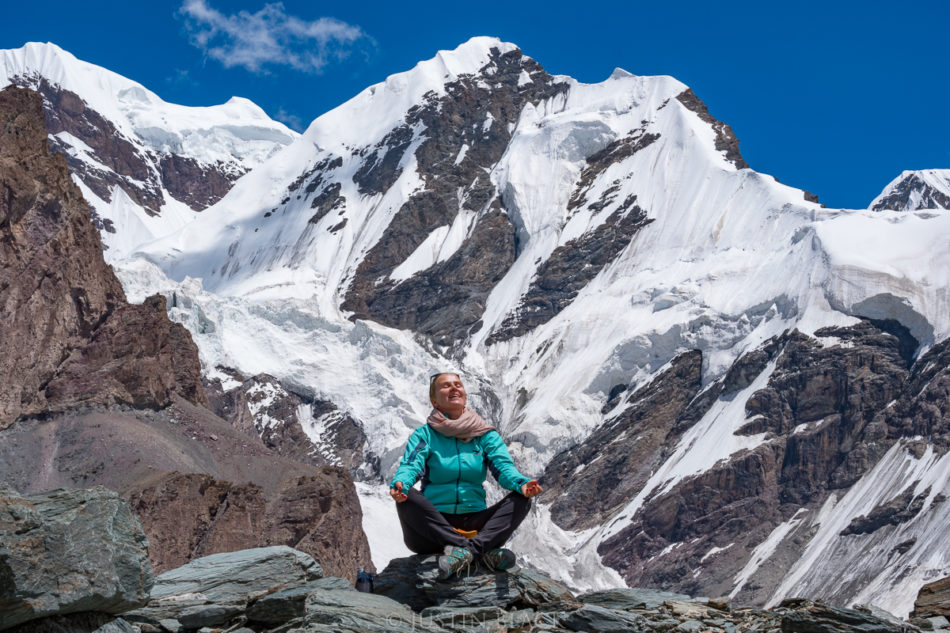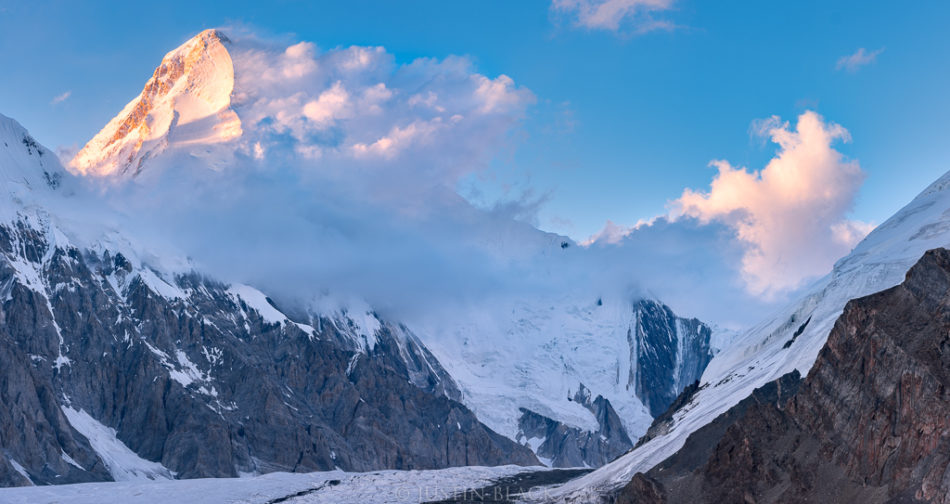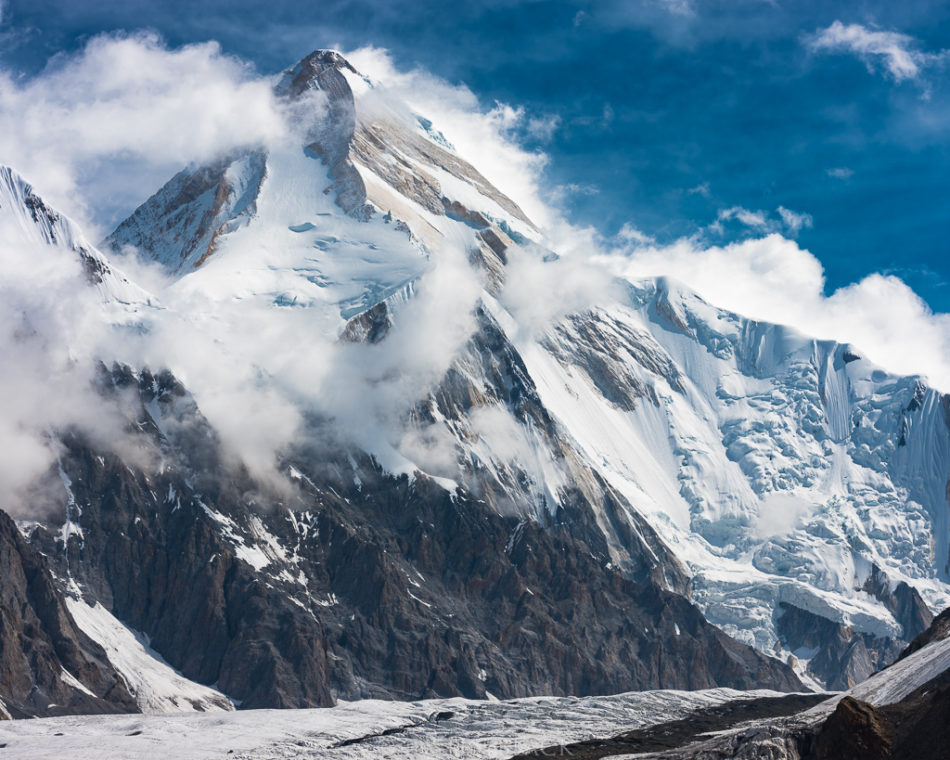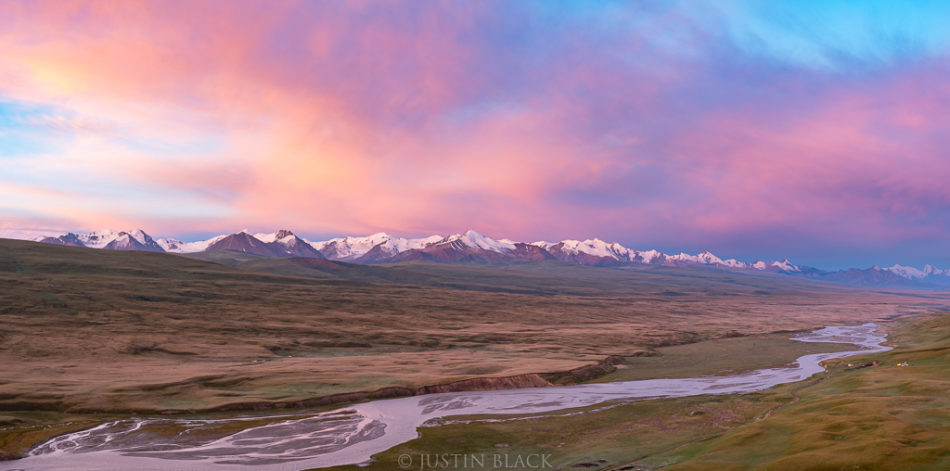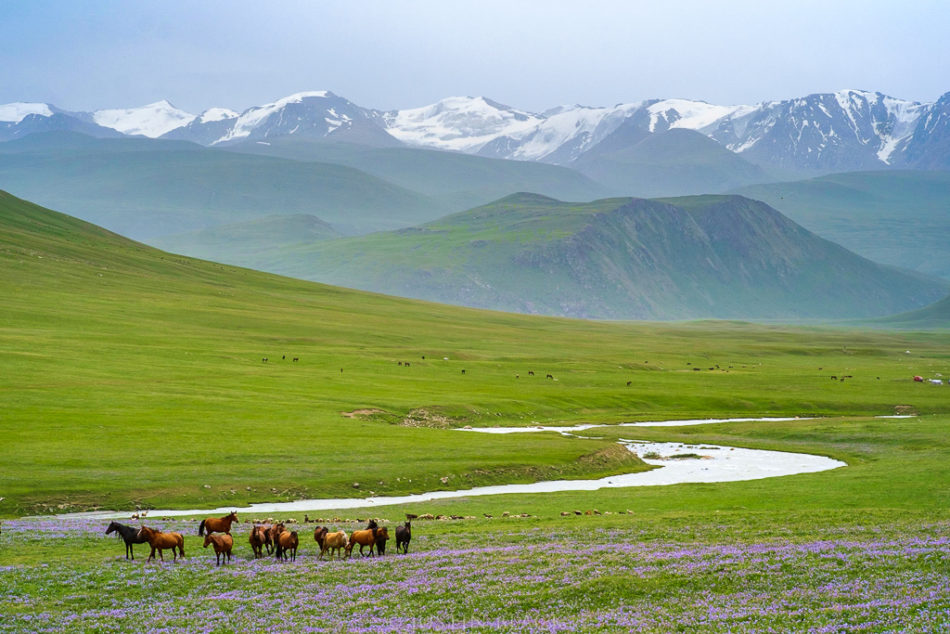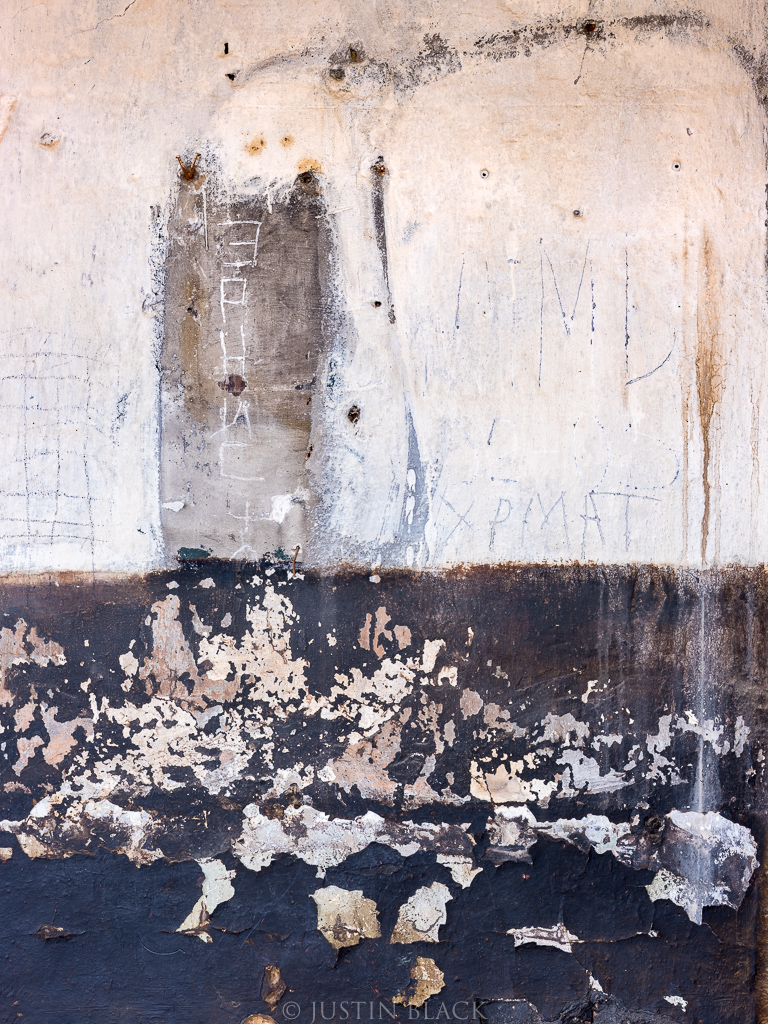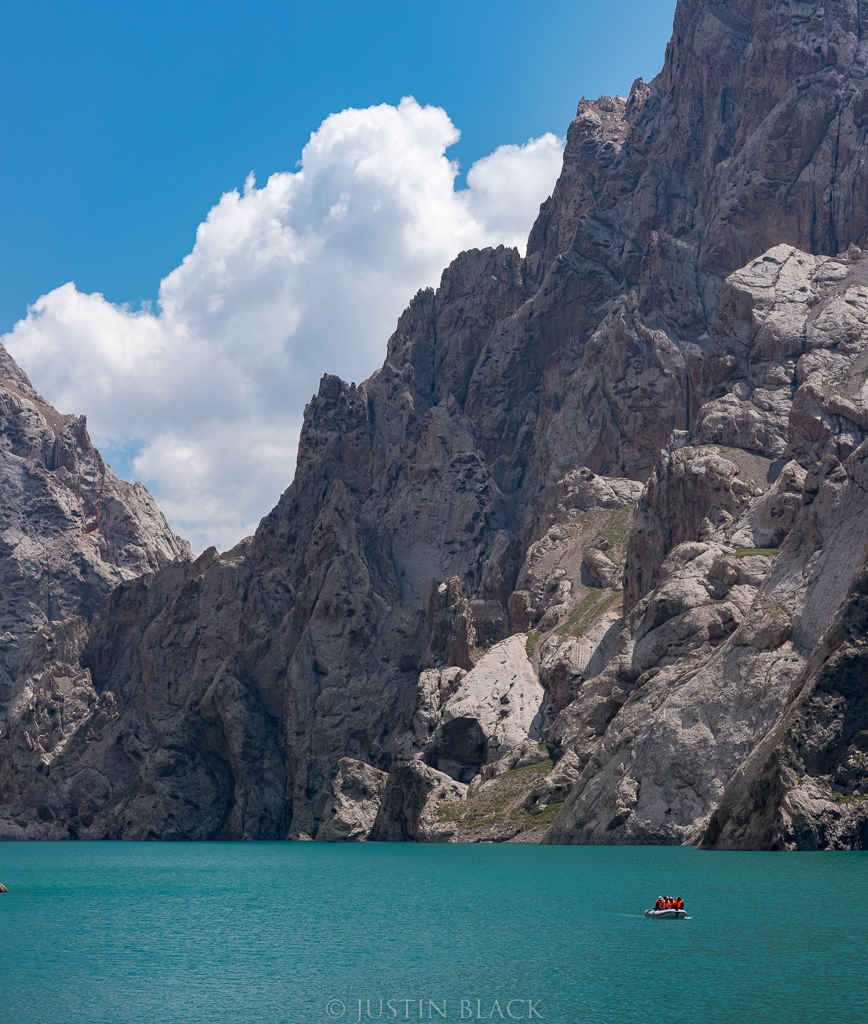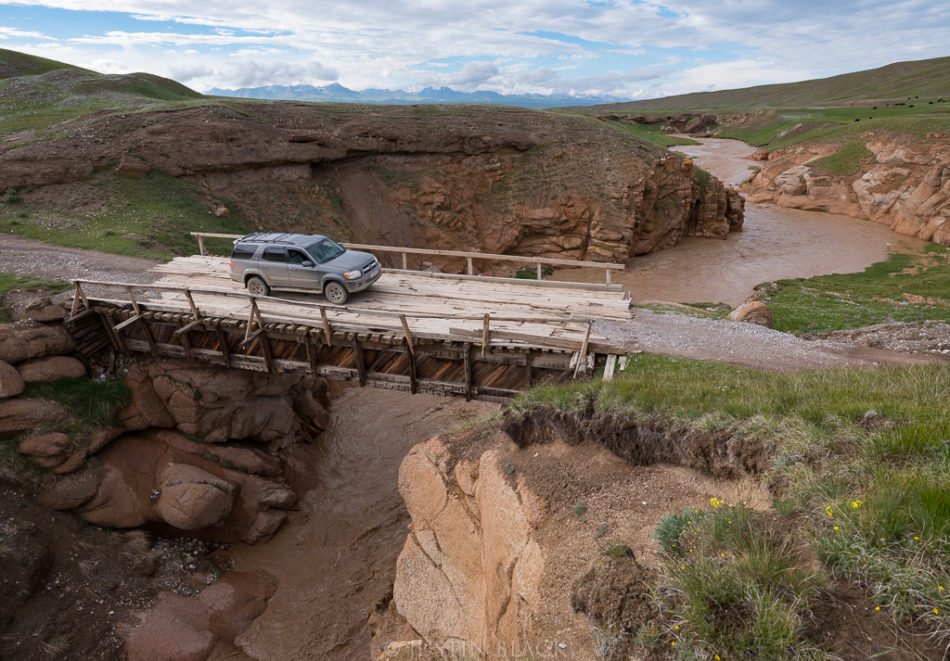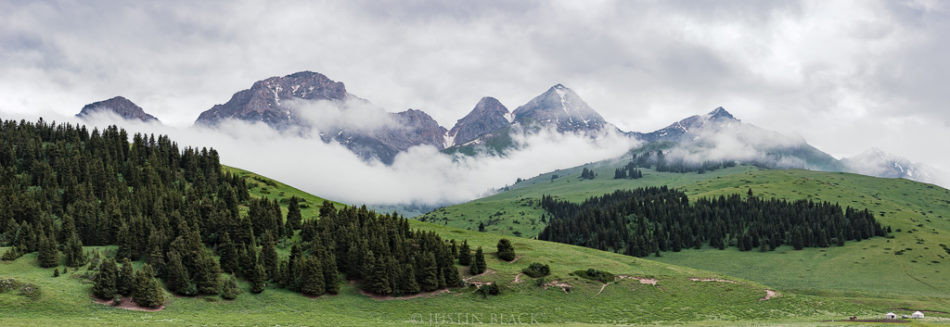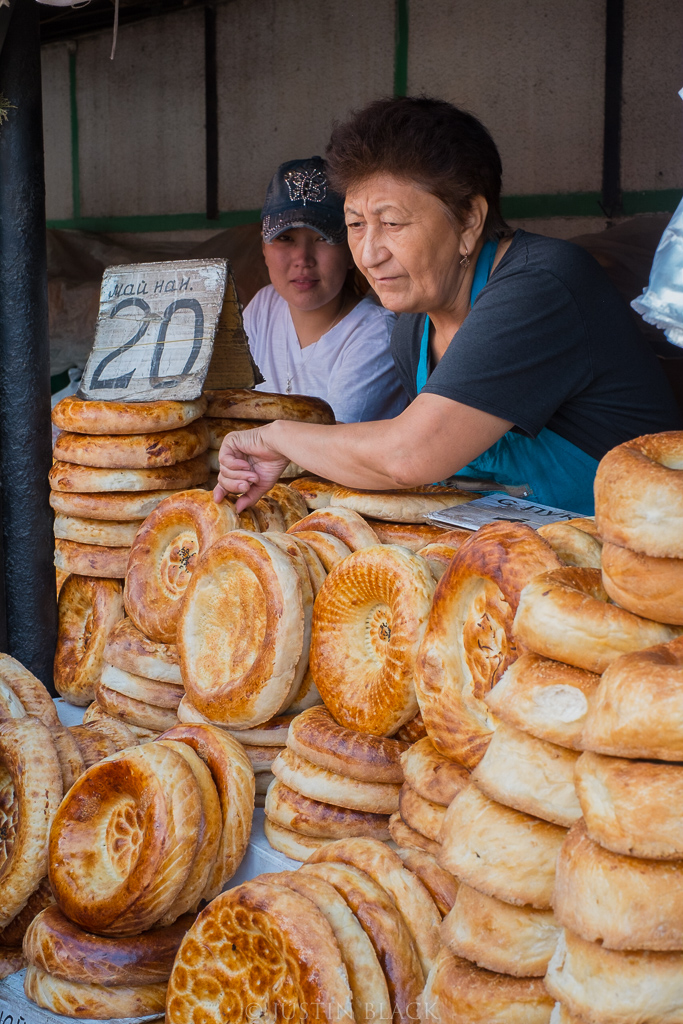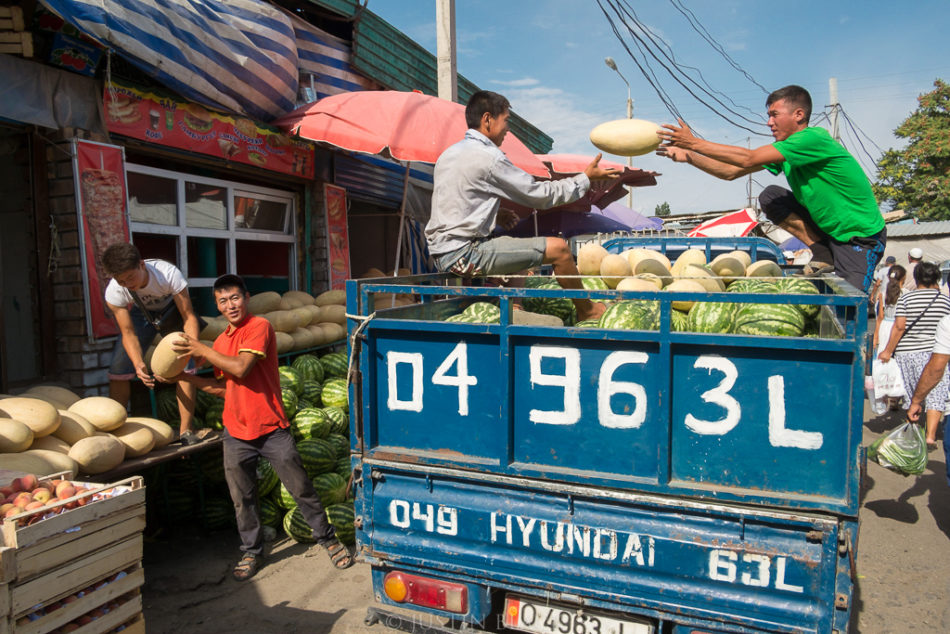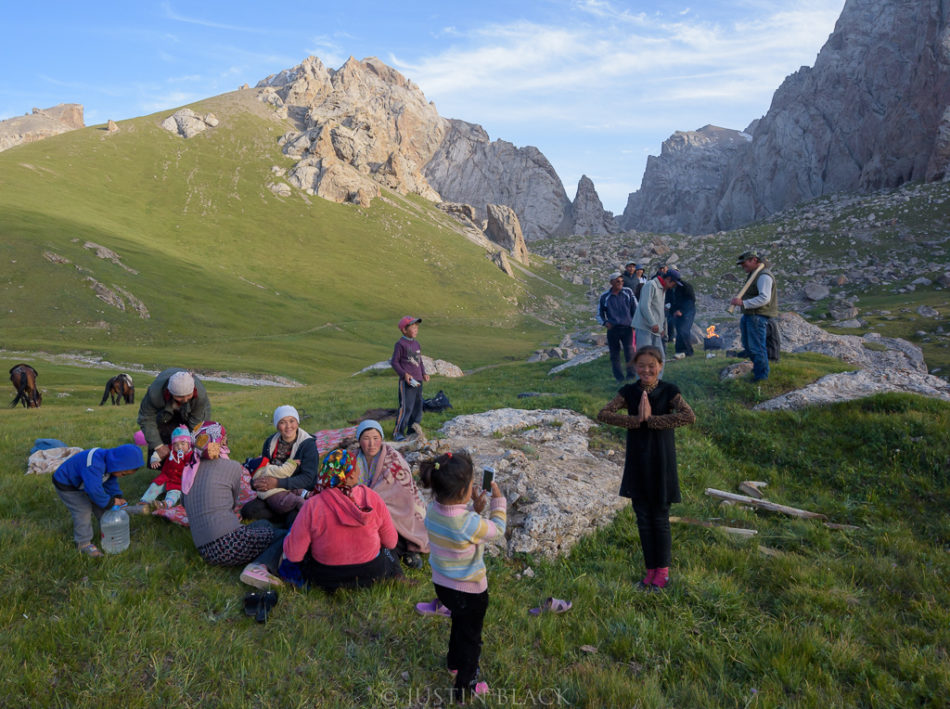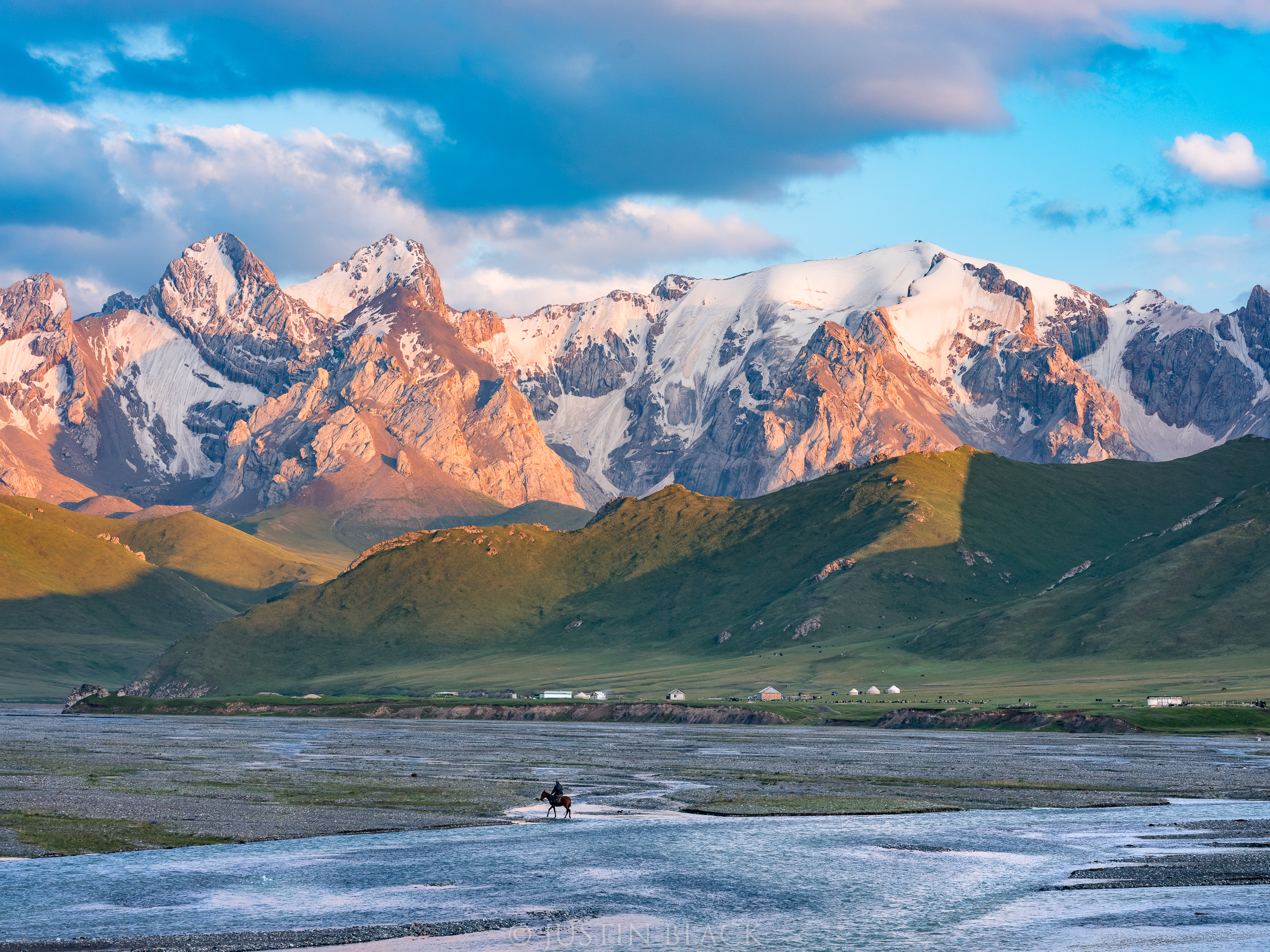
Kyrgyz Republic
Overview
When I tell folks that my wife Lena is from Kyrgyzstan, the response is usually, “She’s from Kurdistan?!?” or alternatively, “What? Where is that?” This little-known Silk Road country is, however, home to some of the most awe-inspiring mountain landscapes on the planet, as well as an immensely hospitable culture. Visionary Wild’s first overland expedition there in July 2017 grew out of a lengthy scouting trip that Lena and I made in 2015. This photographic adventure, from the idyllic alpine lake of Song Kul to the glacier-borne basecamp beneath mighty Khan Tengri – one of the world’s most beautiful peaks rising to 23,000ft. – represents what Lena and I consider the finest of the Kyrgyz mountain landscape. We have fallen in love with the Kyrgyz people and their spectacular homeland, and look forward to sharing this wonderful corner of the planet with you! –Justin Black
For lovers of wild mountain landscapes, the Kyrgyz Republic is among the most underrated travel destinations on Earth. The Tien Shan mountains rise higher and wilder than the Rockies, Sierra Nevada, Alps, or Andes, and peaks below 16,000-feet in elevation are barely considered worthy of a name. Along the Chinese border, the Kakshaal-Too range soars to truly Himalayan heights, on the world’s most northern summits over 7,000 meters: Khan Tengri and Jengish Chokusu (known in the Soviet era as Pik Pobeda). The landscape beneath the peaks is sublime: glacier-carved gorges, slopes covered in alpine wildflowers, raging rivers, spruce and fir forests, and high pastures (“jai-loh”) where semi-nomadic Kyrgyz graze small herds of horses, yaks, sheep, and cattle during the short summer.
The sheer scale and beauty of this landscape is phenomenal, but what is almost unimaginable is the fact that it is barely on the tourist radar. The Kyrgyz Republic is an emerging democracy, and the Kyrgyz people take their freedom seriously. Though it is commonly referred to as the “Switzerland of Central Asia,” this complimentary moniker neglects to recognize the nation’s unique qualities. A former Soviet republic with relatively slow economic growth, Kyrgyzstan has been spared excessive development, so what it lacks in infrastructure is made up for with glorious wild nature. The Kyrgyz people are a Turkic nomad culture that boast the longest history of all currently extant groups in Central Asia. Over the last fifteen centuries, their language and culture have survived the Uyghurs, the Chinese, the Mongols, various Khaganates, the Russians, the Soviet era, and the challenges of building a viable democracy while surrounded by less democratic neighbors.
Our adventure begins in the Kyrgyz capital of Bishkek, where participants will be met at the airport and driven to the thoroughly modern Golden Tulip Hotel, offering excellent accommodations in the city center. There, we will welcome you to our introductory orientation and first dinner as a group. Early the next morning, we load up into our four-wheel drive caravan, comprising three highly capable and comfortable Toyota Sequoias to carry our six guests, Visionary Wild photo leaders Justin Black and Jerry Dodrill, as well as our team’s Kyrgyzstan native and Russian-language interpreter, Lena Black, Visionary Wild Director of Operations. Two additional 4WD support vehicles will carry gear, provisions, and camp staff. From there, we set off on our spectacular route through the Tien Shan mountains.
Our itinerary is designed to take advantage of prime light on the landscape morning and evening each day. After dark, clean air and virtual absence of light pollution provide a superb opportunity for nighttime landscapes including the Milky Way. We will also enjoy excellent opportunities for photography of the Kyrgyz people themselves, in the high pastures, at our yurt camps, and at the sprawling and colorful Osh Market in Bishkek. This will be a highly productive and immensely fun photographic adventure that you’ll never forget.
Click “read more” at below right for the full itinerary, inclusions, exclusions, and more photos…
ITINERARY:
July 5: Arrival Day. We expect that most participants will arrive in the morning on a Turkish Airways flight from Istanbul. Meet your driver at the airport, for transfer to Golden Tulip Hotel in central Bishkek. There, we have arranged early morning check-in so you can go straight to your room several hours ahead of normal check-in time. Meet your fellow photographers, relax in the hotel, or perhaps take a walk to explore downtown. That evening, our itinerary officially starts with a 4pm group meeting in the salon bar, followed by dinner at one of Bishkek’s finest restaurants. Overnight at Golden Tulip Hotel. (Meals included: Dinner)
July 6: Into the Mountains. After an early breakfast, we drive via Kochkor valley up into the mountains and a landscape almost too perfect to be real: lake Song-Kul. Enjoy a home-cooked lunch in our yurt camp, photograph around the lake and up into the mountains, have dinner, and have a restful night in our comfortable and traditional Kyrgyz yurts. (Meals: B/L/D)
July 7: Day at Song-Kul. Sunrise and sunset photography around the lake, plus photo sessions with local herders. Overnight at yurt camp. (B/L/D)
July 8: Silk Road Route. After a morning photo session and breakfast, we descend from Song-Kul via the scenic canyons of Karatal-Zhapyryksky State Preserve toward the town of Naryn, located on a main Silk Road route. After lunch, we continue on to a yurt camp beside a mountain creek in a gorge with soaring rock walls, near the 15th-Century fortified stone caravanserai Tash Rabat, that once sheltered travelers on the ancient Torugart Pass trade route into China. Overnight at yurt camp. (B/L/D)
July 9: Tash Rabat and Köl Suu Valley. After an early breakfast, we will explore and photograph Tash Rabat before driving via the At-Bashy mountain range to the escarpment of the Kokshaal-Too mountains and the turquoise alpine lake Köl Suu, located in a narrow gorge winding between the high peaks. This evening we will enjoy the spectacular scene photography of the mountains and Köl Suu River. Assuming the weather is clear, this is a great location for night sky photography of the Milky Way over the mountains. Dinner and overnight at yurt camp. (B/L/D)
July 10: Köl Suu Lake. Up early to photograph pre-dawn light, and after breakfast we’ve organized an excursion by boat on the little visited turquoise lake Köl Suu, dramatically positioned in a deep glacier-carved gorge between peaks soaring to 16,000 feet. The relatively short approach from our camp to the lake can normally be traversed in our group vehicles, though in wet years, it may involve a combination of travel by specialized 4WD vehicles and a few kilometers on horseback. We’ll be back in time for dinner, more sunset and twilight photography near camp, and overnight in our yurts. (B/L/D)
July 11: Köl Suu area exploration. Sunrise shoot, breakfast, and further exploration and photography in the Köl Suu area and its many canyons. Overnight in our yurts. (B/L/D)
July 12: Kok Shaal-Too. We continue on to new location, beneath a breathtaking panorama of glacier-draped high peaks of the Kok Shaal-Too range. Overnight in our luxury tent camp. (B/L/D)
July 13: Kok Shaal-Too. Early morning and evening “magic hour” light on the peaks, and an excursion to the glaciers. (B/L/D)
July 14: Eki-Naryn Gorge. After sunrise photography and breakfast, we drive into the dramatic white-water river gorge of Eki – Naryn, cleaving the mountains south of Lake Issyk-Kul. Overnight in yurt camp. (B/L/D)
July 15: Jailoo-Suu. Up to photograph at first light. After breakfast, our caravan traverses a beautiful overland route through the mountains south of Issy-Kul, following wild rivers through high pastures, or “jailoo,” with alpine wildflowers in bloom, waterfalls plunging in side canyons. The photography along the way and near camp is incredible. We will make a tented camp in the mountains at about 11,000ft. (B/L/D)
July 16: Onward to Karakol. After morning photography and breakfast, we will continue over the high pass of Tosor, dropping down to our first views of the vast sapphire waters lake Issyk-Kul, and on to the town of Karakol for an afternoon of rest and relaxation at the comfortable Green Yard Hotel. Dinner will be an assortment of traditional dishes from the Dungan ethnic minority, served in the home of a friendly and hospitable Dungan family. Overnight at Green Yard Hotel. (B/L/D)
July 17: Karkyra. We will get a leisurely start this morning, and will then drive north into the Karkyra Valley, to our camp along the Turuk River on the border with Kazakhstan. We will make an excursion into the beautiful Turuk River canyon in the afternoon. Overnight at tent camp. (B/L/D)
July 18: Khan Tengri Base Camp. After breakfast, we head to the helipad for our jaw-droppingly spectacular forty-minute flight to Khan Tengri Base Camp on Enylcheck Glacier at 13,000ft, aboard a reliable and spacious Mi-8 transport helicopter, piloted by a highly experienced military flight crew who fly this route regularly. The flight is a superb opportunity to do aerial photography of the high peaks, glaciers, and valleys. Beneath the 23,000-foot peak of Khan Tengri, and 24,406-foot Jengish Chokusu (AKA Pik Pobeda, the highest peak in the entire Tien Shan mountain system), we will be positioned in a virtually Himalayan setting, with outrageous photographic potential. Nighttime photography with star trails over the mountains is one of our goals. Overnight in tents at base camp. (B/L/D)
July 19: Khan Tengri Base Camp. This morning, we will make the most of early light on Khan Tengri and the surrounding mountains, and then explore the glacier via the rocky medial moraine (no special gear or experience required). We will hope for the late alpenglow on Khan Tengri that can turn the marble summit pyramid a deep orange-pink. (B/L/D)
July 20: Back to Bishkek. Sunrise photography of the mountains from basecamp will be followed by an early helicopter flight back to Karkyra. After breakfast there, we will load up into our vehicles and drive to the north shore of Issyl-Kul, the second largest saline lake in the world, for lunch and a visit to a fascinating Kyrgyz cultural center. We will then return to Bishkek, check into our hotel, and enjoy dinner at one of our favorite restaurants. Overnight at Golden Tulip Hotel. (B/L/D)
July 21: Day in Bishkek. After breakfast, we will make an excursion to the sprawling Osh market. This large city center market features everything from spices, to produce, to dried fruit and nuts, traditional breads and pastries, traditional Kyrgyz clothing, rugs, housewares, and more, with special halls for the butchers, cheesemakers, and on and on. The photographic potential here is phenomenal. Nearby, we will make a short visit to the Tumar Group, makers of high quality Kyrgyz-designed handicrafts – both traditional and modern – including felt carpets, blankets, hats, slippers, handbags, toys, pottery, and more. Both Tumar and Osh Market offer excellent and authentic souvenir shopping options. After lunch, we will continue our tour through the city center, followed by a celebratory final dinner at one of Bishkek’s best restaurants. Overnight at Golden Tulip Hotel. (B/L/D)
July 22: Day of departure. We all say “Jakshy bargyla” (goodbye) and go our separate ways until our next adventure. Airport transfer provided. (B)
INCLUDED:
- Accommodation for all seventeen nights. Single occupancy available at hotels and in tent camps (prorated double-occupancy available as well). Note: Due to limited availability, when we stay in yurts, they will be shared on a double-occupancy basis only.
- All meals and beverages (including wine and beer with dinner).
- All in-tour photographic instruction, land transportation, and guide services by leader team of two professional photographers, Visionary Wild’s Kyrgyz Republic native Director of Operations, and professional Kyrgyz guides.
- Round trip helicopter flights to South Enylchek Glacier Base Camp beneath Mount Khan Tengri
- Private excursion by Zodiac on Lake Köl-Suu
- Horseback rides (optional, and according to availability)
- Support provided by professional local overland drivers/camp staff, and camp cook
- Permits for special access to border zone areas, taxes.
- Supplemental gratuities for Kyrgyz staff
EXCLUDED: All international air travel and domestic transportation within your home country, any other travel services required to arrive at the tour commencement location, along with all associated taxes, levies and insurances. Immigration, duty, passport and visa fees where applicable. Personal items including gifts or other purchases, any paid communications, alcoholic beverages other than wine and beer served to the group at dinners, hotel room service or minibar charges, travel insurance (required), etc. Gratuities for local guides, drivers, and camp staff (we recommend that each guest budget US$300, or the equivalent in Euros or Kyrgyz Soms). Optional activities not explicitly listed as included in the itinerary.
Note: We advise anyone considering this adventure to read “The Realities of Travel in the Kyrgyz Republic,” farther down on this page.
Instructors
Justin Black
- JUSTIN BLACK is a photographer (www.justinblackphoto.com), writer, editor, expedition leader, photo workshops instructor, a Fellow ...
Jerry Dodrill
- Jerry Dodrill has been an award-winning professional photographer and highly regarded photography teacher for more than two decades. A protégé of the late legendary adventure photographer Galen Rowell ...
Pricing
Highlights
- One of the world’s great mountain landscapes: Soaring peaks ranging from Alpine to Himalayan in beauty and scale, glaciers, pristine lakes, wild rivers, spruce and fir forests, alpine wildflowers, and expansive high pastures.
- Culture: the Kyrgyz people are proud of their ancient culture at the Silk Road crossroads. Their hospitality and good humor are famous. If you are curious about the cultures of Central Asia or the former Soviet Union, this is a great way to experience them.
- Helicopter excursion for two nights at base camp on the South Engilchek Glacier beneath the 23,000ft. pyramidal summit of Khan Tengri.
- Horseback excursions (optional, and as available)
- Group transport in three capable and comfortable Toyota Sequoias, plus two 4WD support vehicles.
- Small group – ideal for superior field photography experience, ample one-on-one instruction, and enhanced camaraderie.
- Professional instruction by Justin Black and Jerry Dodrill, with excellent local support
- Creativity and visualization: learn to find new and unexpected compositions
- Advanced field techniques for landscape and cultural photography
- Breaking through creative block and making great photographs in challenging situations
- Constructive critiques of participant photographs
- All-inclusive from Bishkek
- Visa-free for citizens of sixty countries, including the USA
Accommodations
Please note: This overland adventure involves travel into little-visited corners of a sparsely populated former Soviet Republic, where lodging options are limited. We therefore make use of a mix of hotels, yurt camps, and tent camps. The single-occupancy option refers to the hotel and tent camp nights only. Participants traveling alone share yurts on a gender specific basis, though they are roomy and set up to accommodate sharing well.
Accommodations
Bishkek: Golden Tulip Hotel – an excellent and modern European business-class hotel in the city center.
Song-Kul: Yurt Camp (with hot shower and toilet facilities) – Spacious, comfortable, and featuring the impressive hospitality of our Kyrgyz hosts, yurt camping may be simple, but it is very civilized.
Tash Rabat: Yurt Camp (with hot shower and toilet facilities)
Köl Suu: Yurt Camp (with hot shower and toilet facilities)
Kotur Valley: Visionary Wild Tent Camp (with hot shower and toilet facilities)
Eki-Naryn: Yurt Camp (with hot shower and toilet facilities)
Jailoo-Suu: Visionary Wild Tent Camp
Karakol: Green Yard Hotel – The best hotel in Karakol: clean, modern, good beds, good showers, good breakfasts, solid Wi-Fi, and lovely grounds.
Karkyra: Tent Camp (with hot shower and toilet facilities)
Khan Tengri Base Camp: Tent camp (steam room and toilet facilities)
Travel





Expectations
The Realities of Traveling in Kyrgyzstan
by Justin Black
A trip through the mountains of Kyrgyzstan means real adventure travel. While this will be a surprisingly comfortable trip, it is designed for folks who are adventurous and willing to roll with the realities of travel in a nation where life tends to be simple, and rules of the road can be a little unconventional. Here are a few things you’ll need to be prepared for:
- Group Vehicles and Roads: We will use experienced local drivers and several capable and comfortable 4WD Toyota Sequoia SUVs to transport our group, and we will make use of their off-road capabilities. Main artery highways in Kyrgyzstan are generally very good, but many of the locations we access will be by a mix of pavement, gravel, dirt roads, jeep trails, and cross-country travel. We will ford creeks, cross bridges that have seen better days, drive on narrow mountainside roads with long and steep drop-offs below us, drive off-road as necessary to bypass obstacles or washouts, etc. In reality, these are all manageable issues – to be taken seriously, but nothing really to worry about – but getting around the mountains of Kyrgyzstan is not like a drive through a National Park in the USA.
- Tiolets: Most of the toilets you will encounter on this trip are western-style, but if you’ve never had the pleasure of using a Turkish toilet, you probably will at least once on this trip. To be indelicate, this sort of facility requires you to squat and balance while you do your business. Toilets with seats are the norm in hotels, in our tent camp, and at most yurt camps, but you will inevitably come face to face with a hole in the floor at some point on this trip, and probably more than once. Yurt camps generally have outhouses, sometimes with flush toilets. Clever gravity-fed sinks with soap are available so you can wash up after.
- Showers: For bathing in camp, our expedition staff will bring along a portable “banya” – a Russian steam room set up for bathing. Due to limits of time and capacity, it may or may not be feasible for each person to have a shower every day in camp, but I would expect to shower at least every other day. Showers in the hotels are great, with plenty of hot water.
- Yurts: A yurt is a large, round, semi-rigid tent-like structure with an exterior made of wool felt over a frame of wooden ribs. In the Kyrgyz language, they are “boz-uy,” which literally translates to “grey house.” In addition to Kyrgyzstan, yurts are traditional shelters in Mongolia (where they call them “gers”), Kazakhstan, and the western minority areas of China. Your yurt will have either proper twin beds or several sleeping pads inside, the latter of which one can stack to make a bed that is thinner and firmer, or thicker and cushier. Sheets, pillows, and lots of cozy blankets are supplied too. Guests will need to sleep two to a yurt, though there is tons of space inside. At some locations, a stove may be installed for heat, and operated as necessary.
- Tent Camp: In remote locations where neither yurts nor hotel rooms are available, two-room tents will be set up for each participant by our expedition staff. Comfortable portable beds are provided. We recommend bringing your own goose-down sleeping bag rated to keep you comfortable in temperatures as low as 0ºF, though we can arrange a loaner if you need one.
- Electricity: Kyrgyzstan operates on 220-volt current, using Type C and F plugs. Hotels will of course have power, as will our vehicles for the purpose of charging camera batteries. Yurt and tent camps may have electricity via solar panel or generator, available for a limited numbers of hours per day. We recommend bringing sufficient camera batteries to cover three days of photography between recharges.
- Elevation and Fitness: Our travels will take us to elevations between 10,000 and 13,000 feet for extended periods, with possible excursions up to 14,000ft. If your experience is that you acclimate to high elevations reasonably well, then you should be fine. If have never spent a day at 10,000ft or if you know that you have serious trouble at high elevation, you should probably give this trip a pass. We don’t plan any death marches, though you will want to be fit enough to do short hikes at 12,000 feet, on or off-trail. We won’t be doing any technical hiking involving ropes, crampons, or climbing gear.
- Horses: The Kyrgyz are an ancient horse culture, and we will offer optional horseback rides at a few of our locations, in order to access interesting vantage points.
- Tea: If you like tea you’ll be in heaven, as the Kyrgyz drink it at every meal. Of course, we’ll bring plenty of good coffee, beer, wine, and other beverages too.
- Vegetarianism: The Kyrgyz cater for vegetarians surprisingly well, preparing meatless meals on demand (given a little advance warning).
- Safety: Kyrgyzstan is welcoming to foreigners, and is in essence a safe, secular democracy with little petty crime, though it is no stranger to basic corruption, such as graft and nepotism among the political class. Culturally, the ethnic Kyrgyz practice a rather relaxed form of Islam, the Soviet period having made the nation impressively tolerant of religious and ethnic differences. We have never felt threatened or unsafe at any stage of our visits there.
- Visas: Easy! No visa required required for U.S. citizens and many other nationalities.
- Flights: Turkish Airlines offers regular direct flights from Istanbul to Bishkek at very reasonable cost. One can also fly Aeroflot direct from Moscow, though we consider this an unnecessary complication.
- Travel Insurance: Participants are required to arrange insurance to cover any costs associated with travel delays or disruption, cancellations, medical needs while traveling, evacuation, and repatriation expenses. We recommend TravelGuard.com
Please feel free to contact me if you have any questions about this or anything else related to the trip. Kyrgyzstan is a phenomenal place, and we look forward to sharing the adventure with you!
Outcomes
Kyrgyz Republic Facts
Honey: Kyrgyz beekeepers produce so much honey each year that if it were collected in one place it would fill a volume of one meter by two meters by four kilometers (8,000 cubic meters, or eight million liters). That’s a lot of honey. With their hives set up on flatbead trailers, Kyrgyz beekeepers follow peak wildflower bloom as it ascends the mountain slopes in spring and summer, ensuring that their bees have plenty of high quality nectar.
Mountain Nation: 40% of Kyrgyzstan is over 3,000 meters in elevation. It boasts the two northernmost peaks over 7,000 meters, Khan Tengri (7,010 meters / 23,000ft.) and Jengish Chokusu (a.k.a. Pik Pobeda, “Victory Peak,” in Russian, named for the 1943 Russian victory over the Nazis at Stalingrad) topping out at 7,439 meters (24,406ft.). For sake of comparison, Denali in Alaska is “only” 6,190 meters, and Mt Everest’s summit is truly in the jet stream, at 8,848 meters above sea level.
Cuisine: Food in Kyrgyzstan is generally tasty and quite accessible to western palettes, featuring an interesting mix of influences from Turkic, Chinese, Persian, Russian, and Mongol cultures. Given the Kyrgyz herding background, one can generally expect dishes at lunch or dinner to incorporate either lamb or beef, as well as some combination of carrots, onion, mild peppers, potato, noodles, or rice, among other ingredients. Dumplings, or “manti” are popular, as is shashlik, the ultimate shish kebab. Salads of various types are often served on the side, as is watermelon. The tandoor oven was, in fact, introduced to India by Kyrgyz traders, and the Kyrgyz use it well, producing some of the most gorgeous naan bread we’ve ever had. Breakfasts commonly include eggs, Russian blini pancakes, and fresh breads accompanied by homemade raspberry and apricot jam, homemade clotted cream, and lots of tea. We provide good coffee as well.
Kumis: If you believe the melodramatic hype, this homemade, mildly alcoholic traditional Central Asian beverage of fermented mare’s milk is bound to grow copious amounts of hair on your chest as you retch in agony for days. In reality, while westerners may be unaccustomed to the flavor, many of those brave enough to sample it find it to be harmless enough even if it isn’t their thing, while others find it’s effervescence and slightly sour, slightly smoky flavor surprisingly refreshing and can’t get enough. Let’s just say it’s an acquired taste.
Religion: In the wake of seventy years of official Soviet atheism, Kyrgyzstan remains an officially secular state, and most Kyrgyz seem very comfortable with that arrangement. The prevailing religion of Kyrgyzstan is a relaxed version of Sunni Islam of the Hanafi School. It is in sharp contrast to more conservative versions of Islam practiced in other parts of the region, and is best understood as a long-standing melding of Islam with more traditional Kyrgyz spiritual practices of shamanism, animism, and ancestor worship. The ethnic Russian minority is generally either Russian Orthodox or atheist.
